Welcome to a world where your home becomes a living canvas, painted with the vibrant hues of nature’s bounty! Whether you’re just sowing the seeds of your gardening adventure or you’ve nurtured your green thumb for years, “DIY Plant Display Ideas for Homes” is your gateway to transforming indoor spaces with creativity and joy. This guide promises to ignite your imagination while providing practical, step-by-step solutions that will make your plants the centerpiece of your home decor.
Imagine walking into a room where the air feels fresher, the ambiance more inviting, and each plant tells a story of its own. In this treasure trove of indoor plant ideas, you’ll find not only inspiration but also empowerment—equipping you with the confidence to craft stunning displays that reflect your personal style. From simple arrangements that brighten a cozy nook to elaborate designs that wow visitors, each idea is crafted to enhance your living space and bring the joy of the garden into your home. Get ready to immerse yourself in the delightful and rewarding journey of indoor gardening, where success is just a leaf away!
Create Vertical Plant Shelves
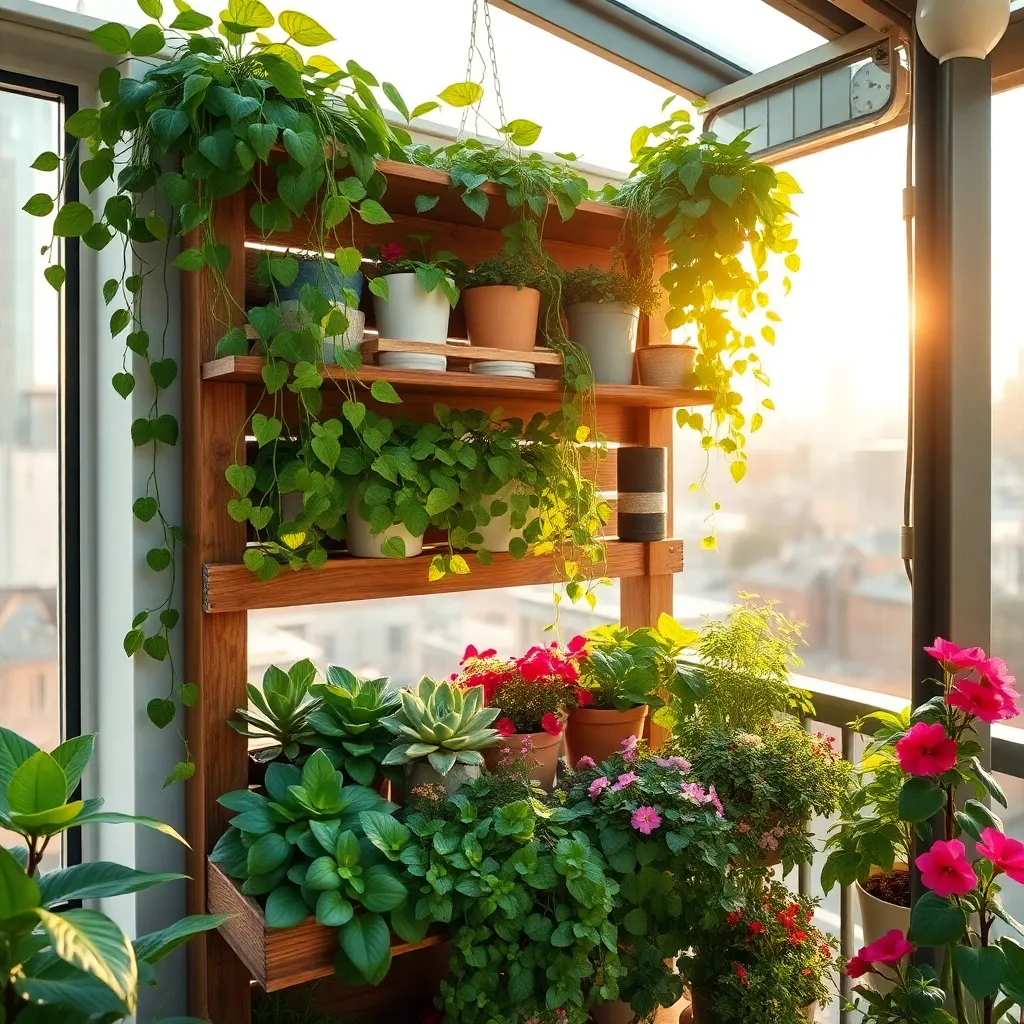
Vertical plant shelves are a fantastic way to maximize space in your home while adding a lush, green aesthetic. To start, choose a location with enough light, such as near a window, to ensure your plants thrive.
When selecting plants, consider those that naturally thrive in a vertical setup, like trailing vines or compact species. Succulents, pothos, and ferns are excellent choices, as they adapt well to varying light conditions.
Use shelves made of moisture-resistant materials like metal or treated wood to avoid decay. Arrange your plants so that larger pots are placed on the lower shelves, which prevents shading of smaller, light-loving plants above.
Watering is crucial, especially for higher shelves where moisture may evaporate faster. Implement a watering schedule that matches the needs of your plant varieties, ensuring that each species is watered appropriately without over-saturating.
For advanced gardeners, consider integrating a drip irrigation system to maintain consistent moisture levels. This system can be especially beneficial for those with a busy schedule, as it reduces the need for frequent manual watering.
Repurpose Jars as Planters
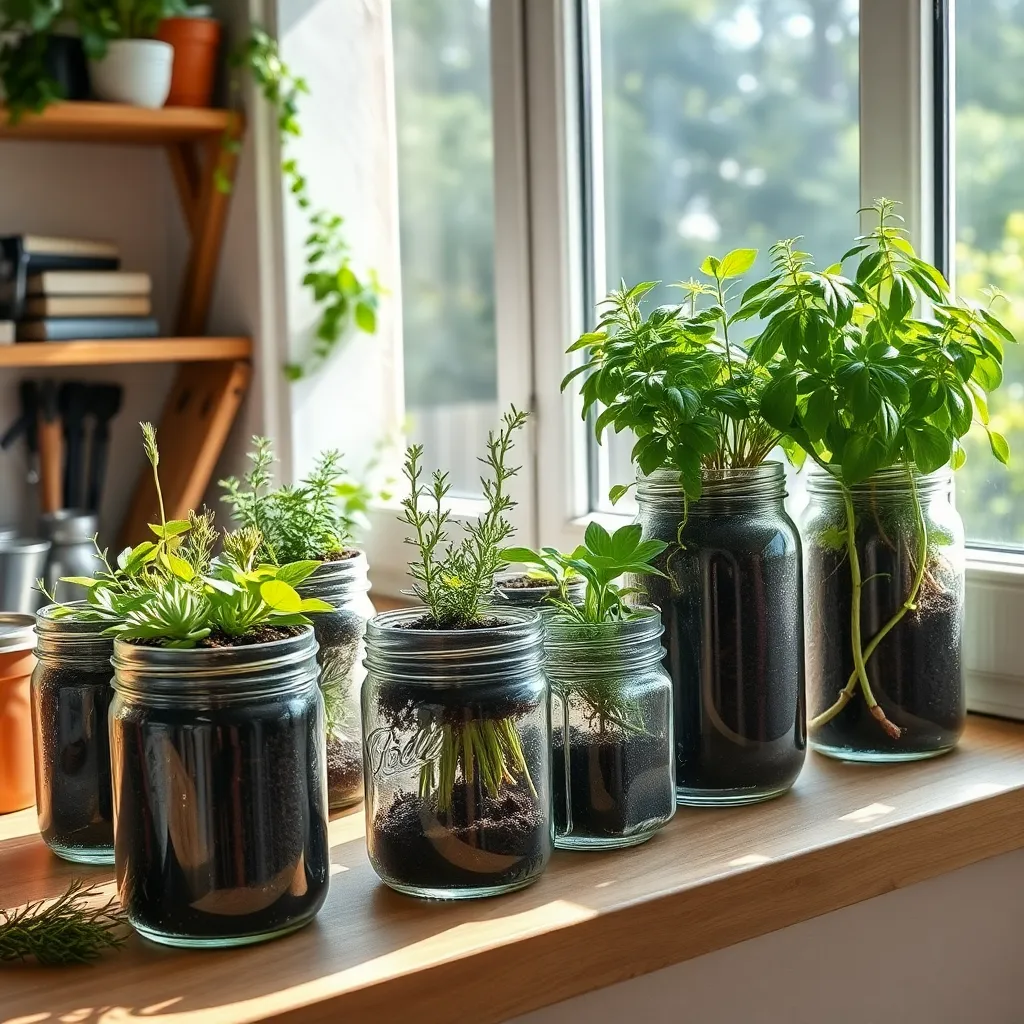
Repurposing jars as planters is a delightful way to bring a touch of greenery into your home while embracing sustainability. Select jars of various sizes to create an eclectic display and ensure they have wide mouths for easy planting.
When choosing plants, opt for small species like succulents or herbs that thrive in confined spaces. Succulents are particularly forgiving, requiring minimal water and thriving in indirect light.
For planting, fill the jar with a well-draining soil mix, such as cactus soil, to prevent root rot. Adding a layer of small stones at the bottom can enhance drainage, ensuring the longevity of your plants.
Ensure your jars are positioned in a spot with ample sunlight, as most small plants need light for photosynthesis. Water sparingly by checking the soil moisture level; a light misting is often sufficient for succulents.
Build a Hanging Macrame Display
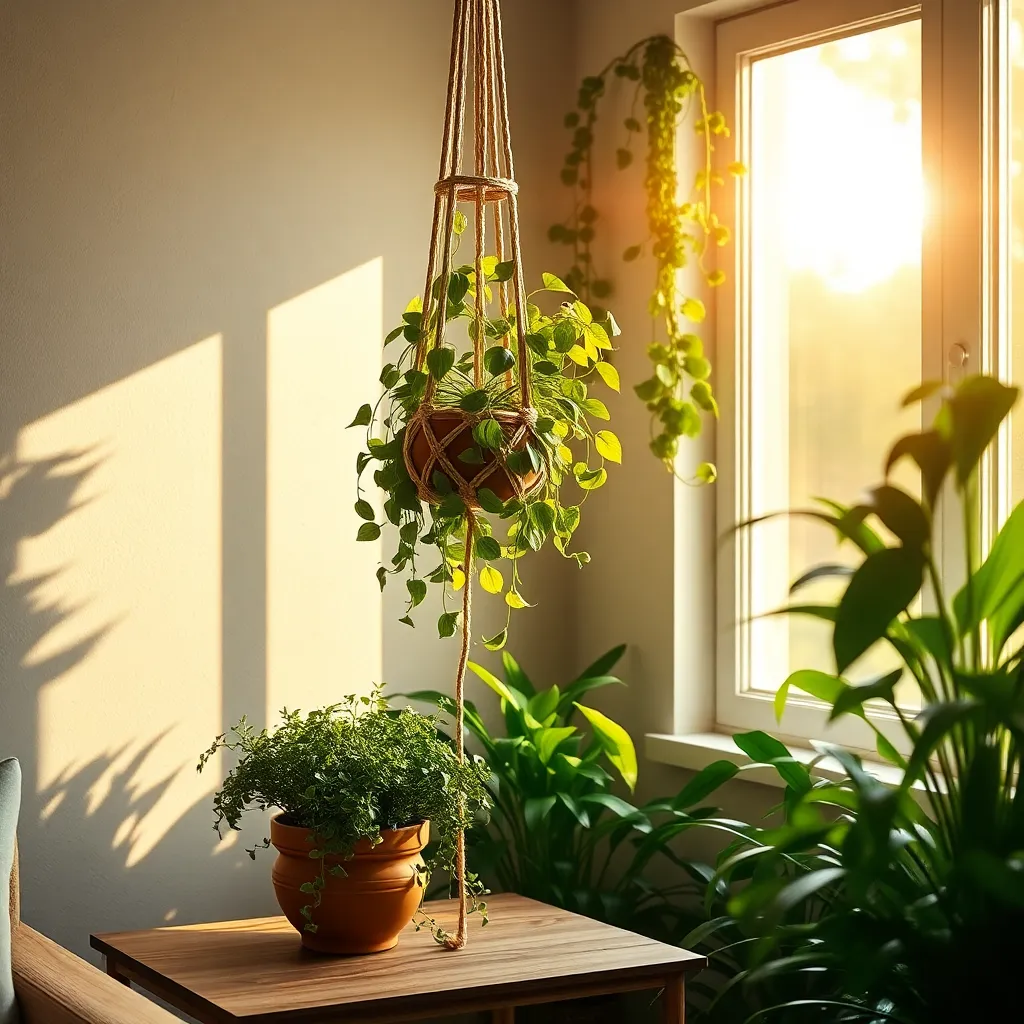
Creating a hanging macrame display adds a bohemian touch to your indoor garden space. Start by selecting a sturdy cotton cord, which is durable and easy to work with for beginners.
Begin your project by cutting the cord into lengths of approximately six feet; you’ll need about eight cords for a simple design. Secure the cords together with a knot at one end, leaving a loop for hanging, and then divide them into pairs for knotting.
To form the macrame pattern, use basic knots like the square knot or half-hitch. These knots not only support your plant but also provide a decorative element that enhances your room’s aesthetic.
Choose plants that thrive in indirect light, such as pothos, spider plants, or trailing ivy, which are perfect for hanging displays. Ensure your chosen plant has a well-draining soil mix, such as a blend of peat moss, perlite, and pine bark, to prevent waterlogging.
Water your hanging plants thoroughly once the top inch of soil feels dry; this generally means watering every 7-10 days depending on your home’s humidity. For advanced gardeners, consider incorporating a moisture meter to precisely monitor soil moisture levels, which helps in maintaining optimal growing conditions.
Regularly rotate your hanging plants to ensure even growth and exposure to light. This simple maintenance trick prevents plants from becoming lopsided and keeps them healthy and vibrant.
Design a Tiered Plant Stand
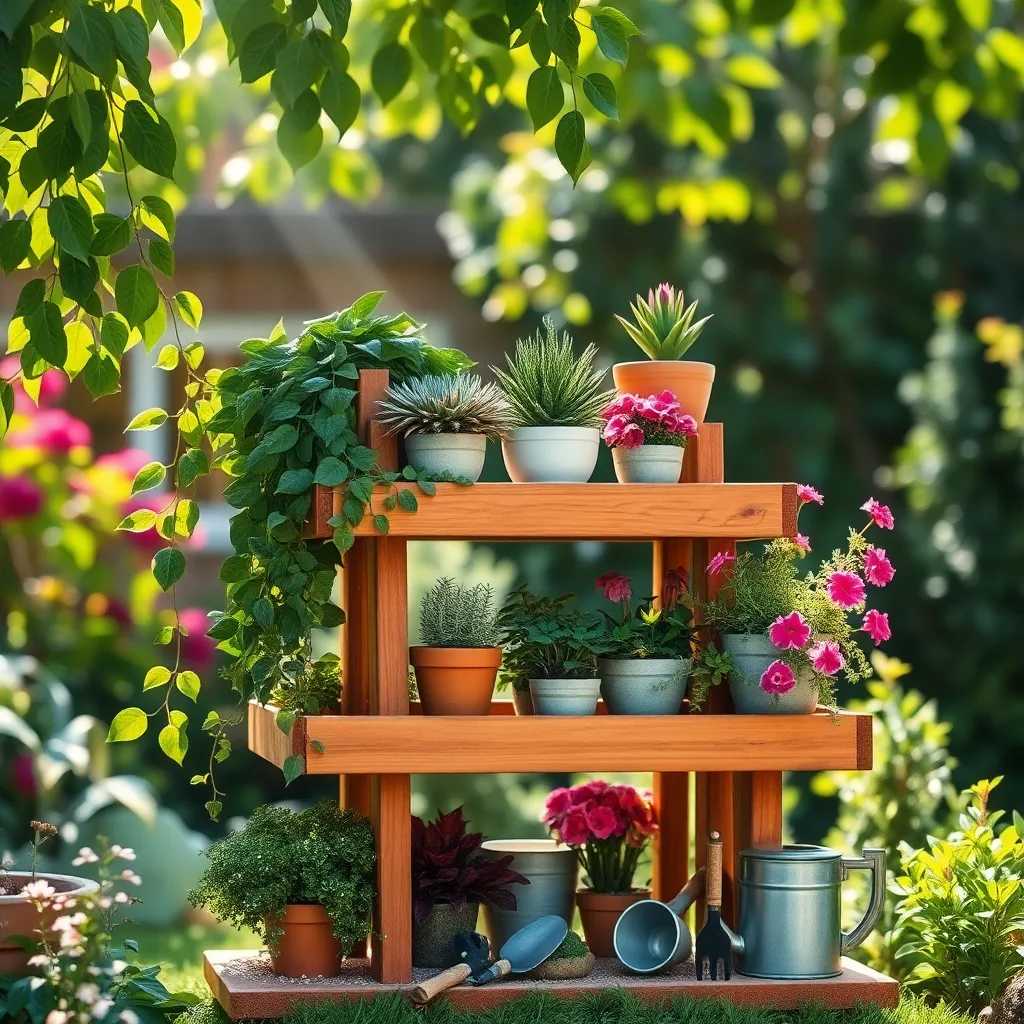
Creating a tiered plant stand is a fantastic way to maximize space and add a dynamic display to your home. It allows you to showcase a variety of plants, each with their own unique characteristics, while maintaining a compact footprint.
Start by selecting a location with ample natural light, as this will accommodate a wider range of plants. Consider using a corner of a room or near a window where light levels can vary from top to bottom, offering different growing conditions.
When choosing plants for your tiered stand, opt for a mix of sizes and foliage types to create visual interest. Place taller plants like Monstera or Fiddle Leaf Fig on the bottom tier, and use the middle and top tiers for medium-sized plants like Pothos or Spider Plants.
For optimal plant health, ensure that each tier has proper drainage to prevent waterlogging, which can lead to root rot. Use pots with drainage holes and add a layer of pebbles at the bottom of each to enhance moisture control.
Watering needs will vary depending on the plants you choose, but a general rule is to water when the top inch of soil feels dry. Check each plant individually, as those on lower tiers may dry out more slowly due to reduced exposure to air circulation and sunlight.
To maintain a thriving display, rotate plants periodically to ensure even light distribution and promote balanced growth. This practice is particularly beneficial for light-loving plants that might otherwise lean towards the light source.
- Ensure the stand is sturdy and can support the weight of all plants and pots.
- Use a variety of pot colors and textures to add aesthetic appeal.
- Consider adding grow lights if natural light is limited, especially during winter months.
With a little creativity and careful planning, your tiered plant stand can become a stunning focal point in your home. Embrace the process and enjoy the beauty of your personalized plant display!
Craft Window Sill Gardens
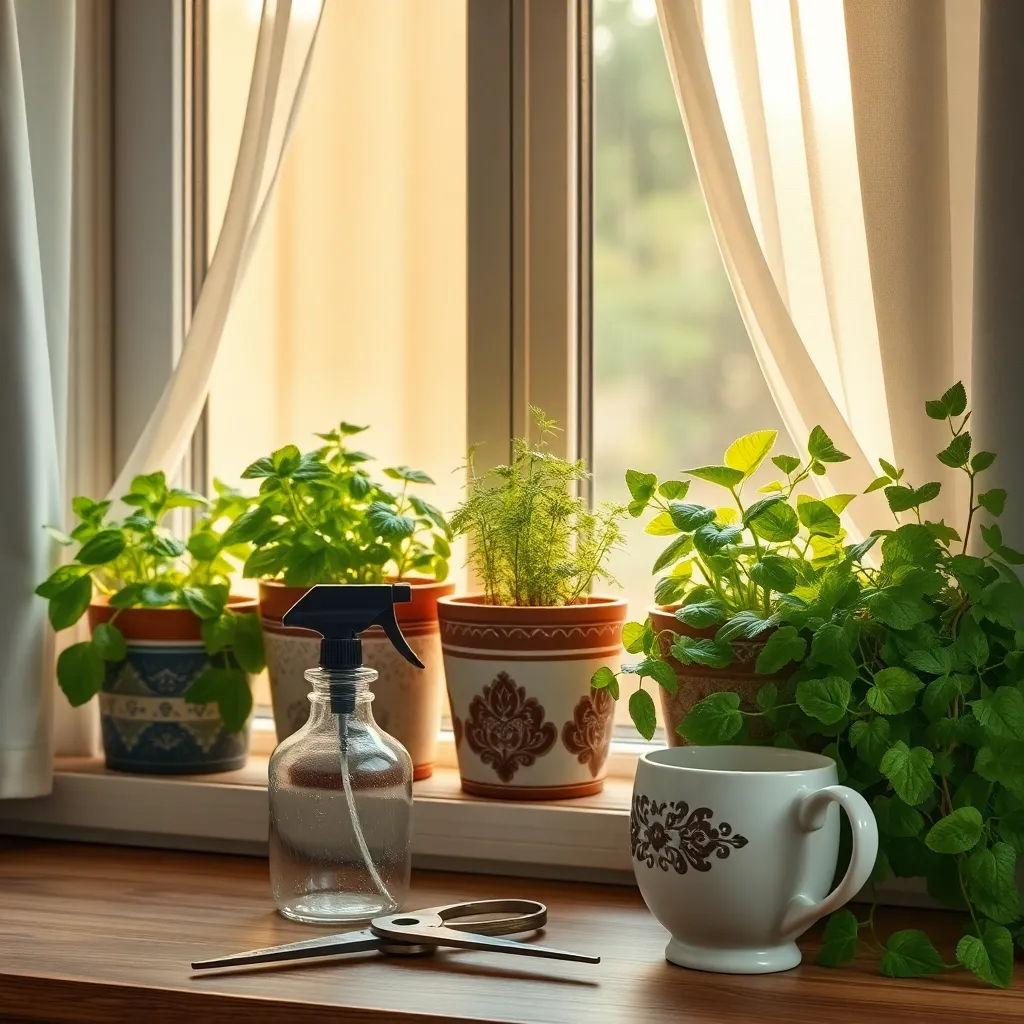
Transforming your window sill into a lush garden is a delightful way to bring nature indoors. Start by selecting plants that thrive in the sunlight conditions available on your sill, such as herbs, succulents, or small flowering plants.
Begin with a sturdy tray or shallow container to catch excess water and keep your sill clean. Ensure your chosen containers have adequate drainage holes to prevent waterlogging, which is crucial for healthy root development.
Next, choose a high-quality potting mix tailored to the needs of your plants; for instance, use a cactus mix for succulents or a nutrient-rich blend for herbs. Watering frequency is key; succulents may need once-a-week watering, while herbs might require more frequent attention, depending on the humidity and temperature of your home.
Consider adding a layer of gravel at the bottom of each pot to improve drainage further. For a touch of creativity, arrange your plants in varying heights using risers or stands to create a visually appealing display.
Prune your plants regularly to encourage bushier growth and remove any dead leaves to maintain plant health. For those with a green thumb, try propagating your plants from cuttings to expand your window sill garden over time.
Conclusion: Growing Success with These Plants
In exploring ‘DIY Plant Display Ideas for Homes,’ we delved into five key relationship-enhancing concepts: creating shared projects to strengthen bonds, nurturing plants as a metaphor for nurturing relationships, fostering creativity together, enhancing communication through collaborative efforts, and cultivating a peaceful home environment to support emotional well-being. Each of these ideas highlights how engaging in creative endeavors can fortify your connection with loved ones.
As your actionable next step, choose one plant display idea from the article and set a date with your partner or family to create it together. This small yet meaningful project can spark joy and deepen your relational ties.
Remember, every relationship thrives on shared experiences and continuous growth. Bookmark this article now to revisit these ideas whenever you need a dose of inspiration or a reminder of the power of collaboration and care. As you look towards the future, know that investing time in both your spaces and relationships can lead to lasting harmony and happiness. Let’s nurture not just our homes, but our hearts as well, creating environments where love and connection can flourish.
